Recently I lost my Long Nose hawkfish after nearly 2 years in my tank. About 4 weeks ago I noticed that he/she wasn't eating. For the first 2 weeks I noticed that it would get excited at meal time but wouldn't take in any food. I tried live mysis, live saltwater grass shrimp, live amphipods and brine shrimp to get it interested in food. Then the last 2 weeks it would not even show an interest until finally it expired. The specimen showed no external evidence of sickness and hits color and eyes remained bright and clear throughout the sickness.
I submit these pictures of the necropsy for discussion. Keep in mind that the internal organs of this species are very small and the gross dissection was performed under a dissecting microscope. I did not prepare any of the tissues for light microscopy examination. Further, I did not witness the fishes final death. He/she was alive when I left for my office in the morning and found dead on the bottom when I returned at 5pm. I am assuming that it had not been that long from time of death since there were no CUC on or near the specimen. Although, by the retracted look of the head, rigor mortis has set in and there was some change in the eye color to red.
Whole specimen. It measured ~4".

Eye showing clarity.
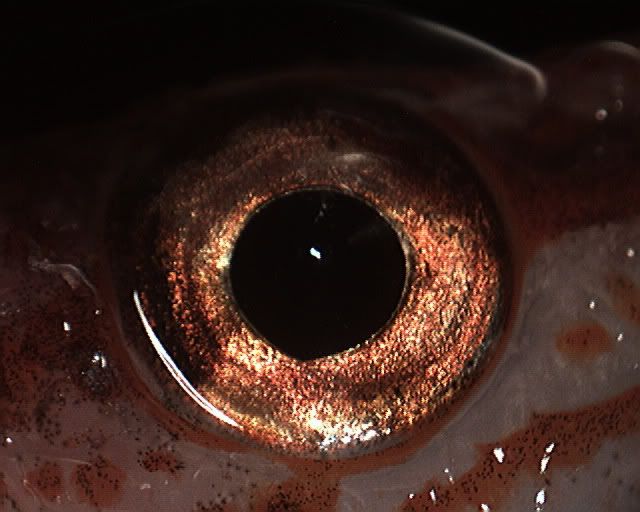
Here is the gill after removing the operculum.
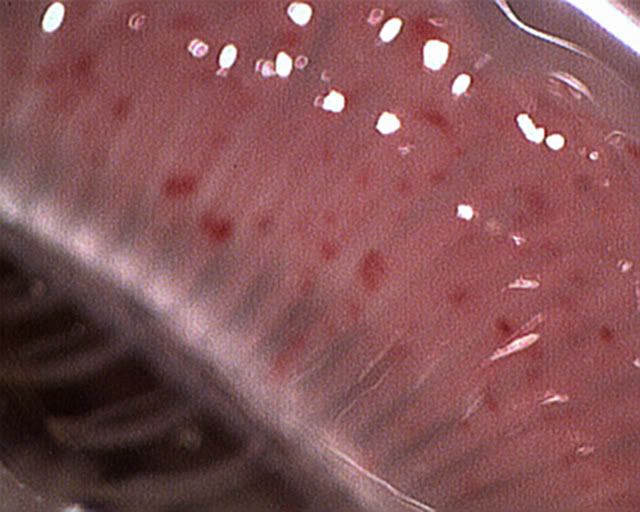
Internal organs after raising body wall. I have labeled the internal organs for simplicity. The most striking thing about this gross section is the "foamy substance" labeled in red. I do not know if this substance is a result of death or something else.
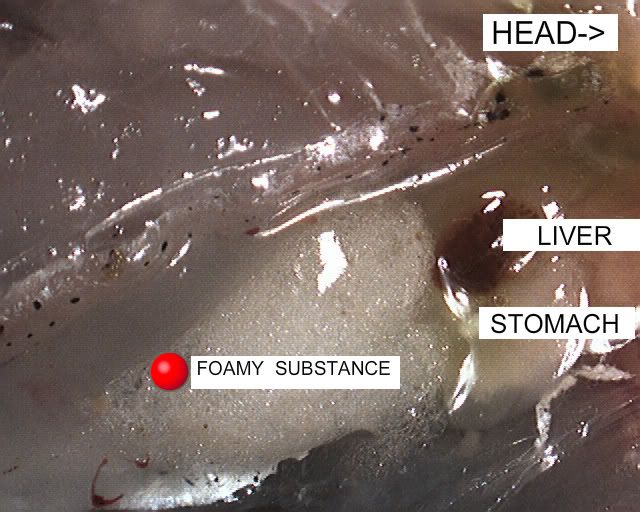
I can say that the foam is not of air bubbles but oil droplets after further examination.
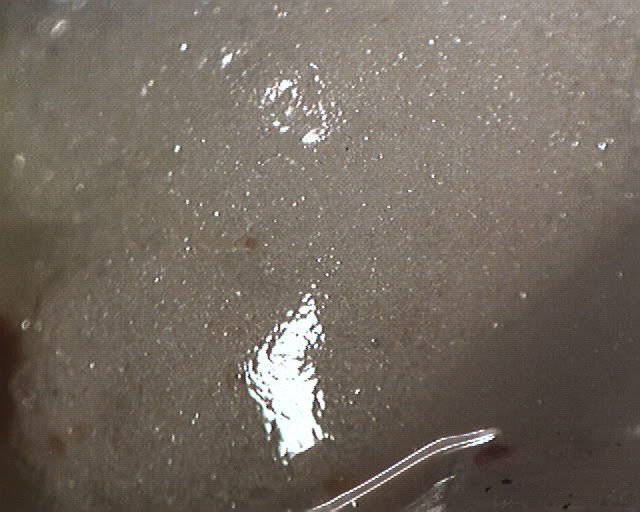
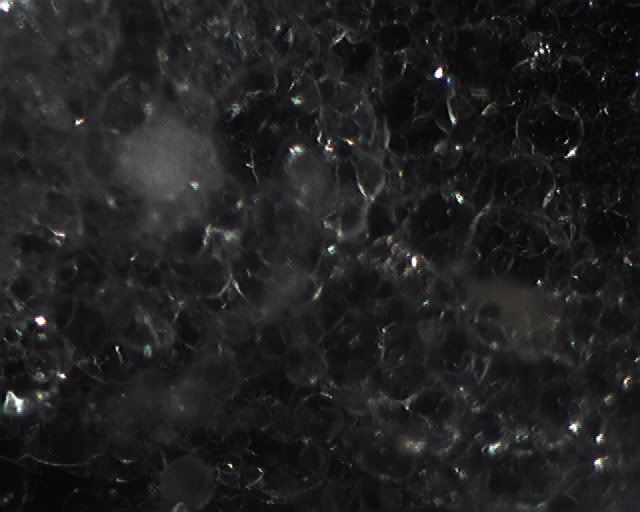
I also discovered something hard in the stomach as can be seen in this photo. Here are the internal organs removed and dissected from their connective tissues to reveal the organs.
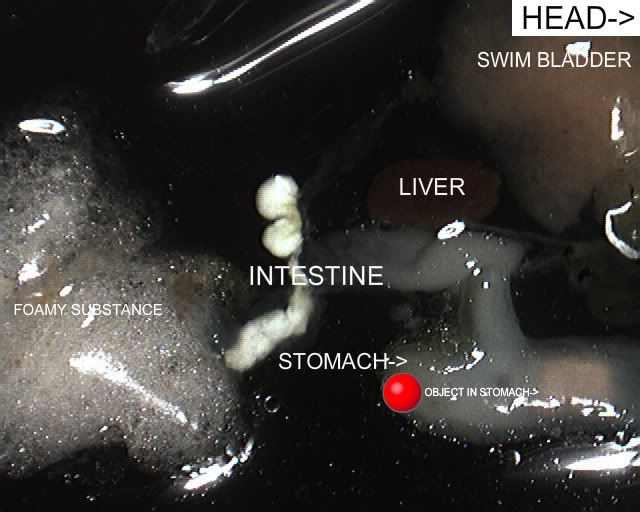
Here is a photo of what I found in the stomach. It was about 6mm x 2mm.
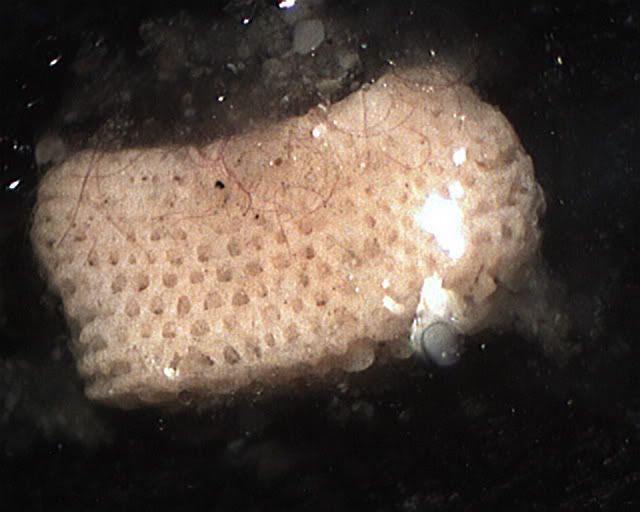
I was intrigued by the uniformity of the holes in this finding and it cracked when I pushed on it with a pin, it was like a hard chalk.
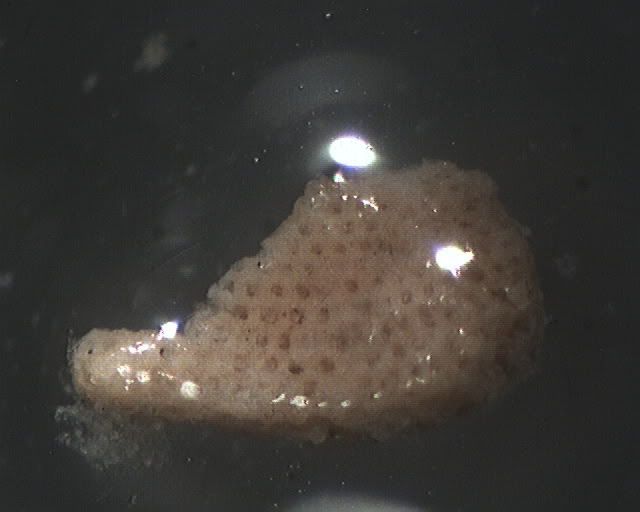
Here it is after allowing to dry.
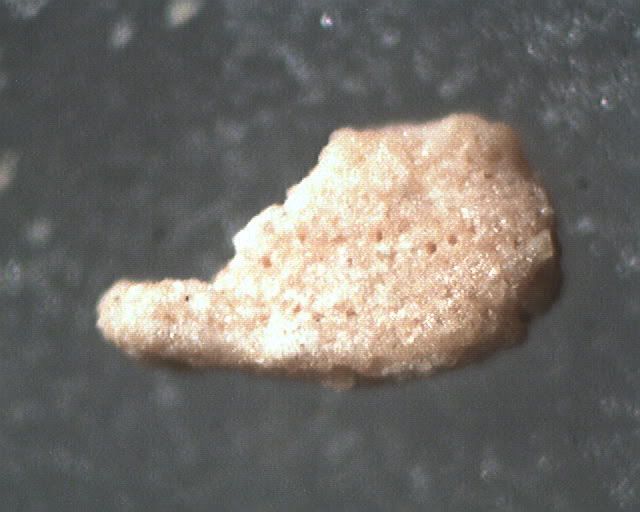
Here is the liver and its related vessels.
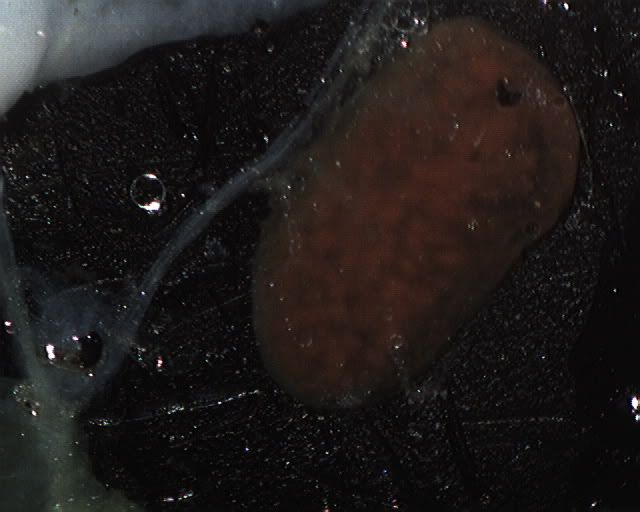
So why did this fish die? Could the oil droplets be a part of the uterus if this was a female? Eggs? Possibly a tumor? Or a natural part of death? Did the hard object in the stomach cause its demise? Could there have been a problem in the gills? Many questions. I may never know what took my little friend, but I feel better looking for an answer.
I submit these pictures of the necropsy for discussion. Keep in mind that the internal organs of this species are very small and the gross dissection was performed under a dissecting microscope. I did not prepare any of the tissues for light microscopy examination. Further, I did not witness the fishes final death. He/she was alive when I left for my office in the morning and found dead on the bottom when I returned at 5pm. I am assuming that it had not been that long from time of death since there were no CUC on or near the specimen. Although, by the retracted look of the head, rigor mortis has set in and there was some change in the eye color to red.
Whole specimen. It measured ~4".

Eye showing clarity.

Here is the gill after removing the operculum.

Internal organs after raising body wall. I have labeled the internal organs for simplicity. The most striking thing about this gross section is the "foamy substance" labeled in red. I do not know if this substance is a result of death or something else.

I can say that the foam is not of air bubbles but oil droplets after further examination.


I also discovered something hard in the stomach as can be seen in this photo. Here are the internal organs removed and dissected from their connective tissues to reveal the organs.

Here is a photo of what I found in the stomach. It was about 6mm x 2mm.

I was intrigued by the uniformity of the holes in this finding and it cracked when I pushed on it with a pin, it was like a hard chalk.

Here it is after allowing to dry.

Here is the liver and its related vessels.

So why did this fish die? Could the oil droplets be a part of the uterus if this was a female? Eggs? Possibly a tumor? Or a natural part of death? Did the hard object in the stomach cause its demise? Could there have been a problem in the gills? Many questions. I may never know what took my little friend, but I feel better looking for an answer.
Last edited:

